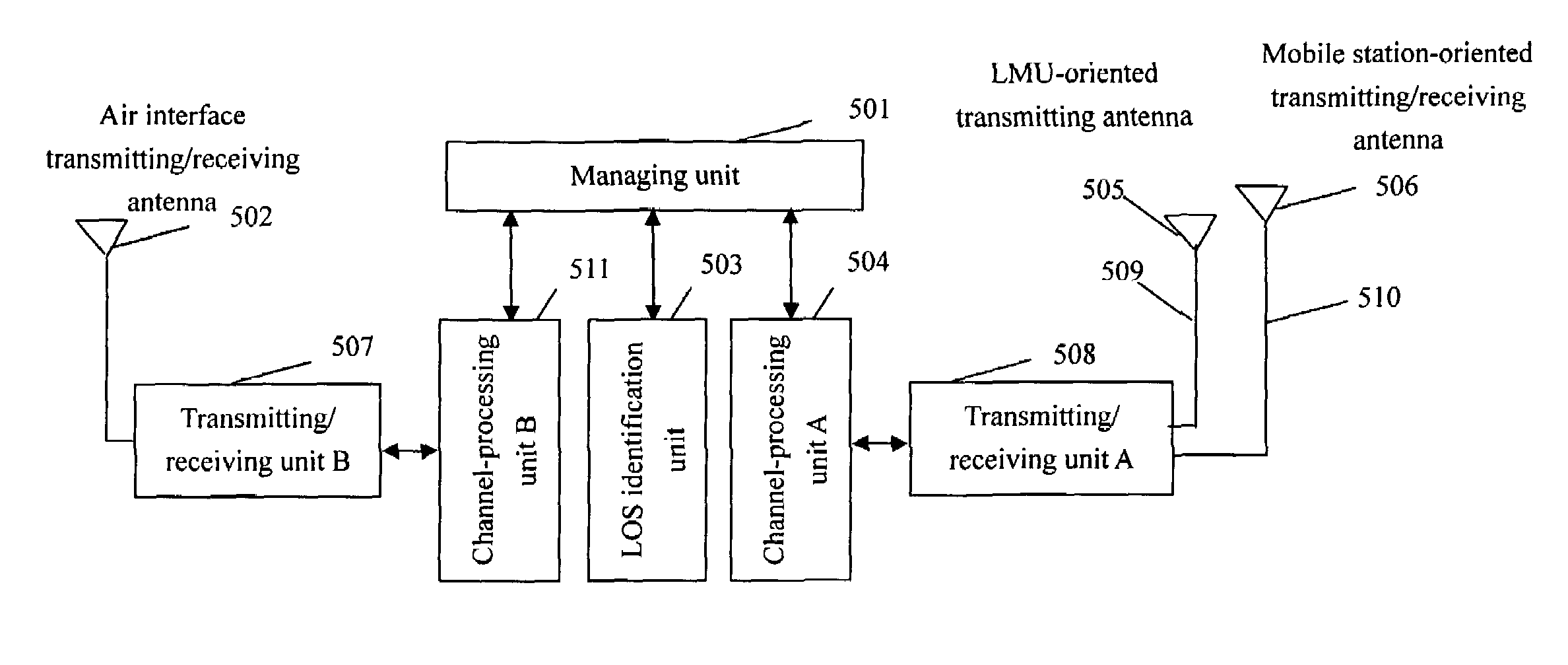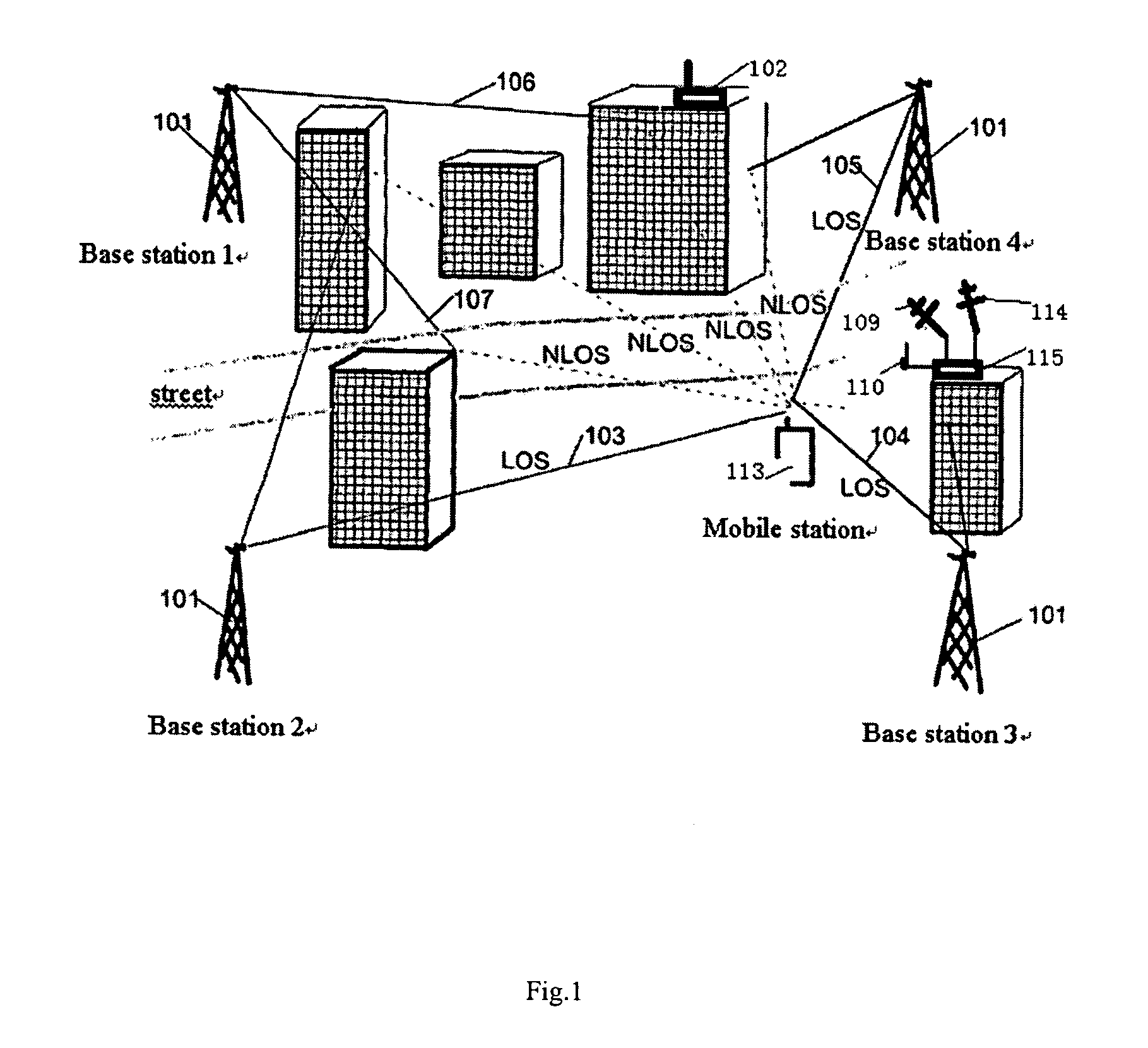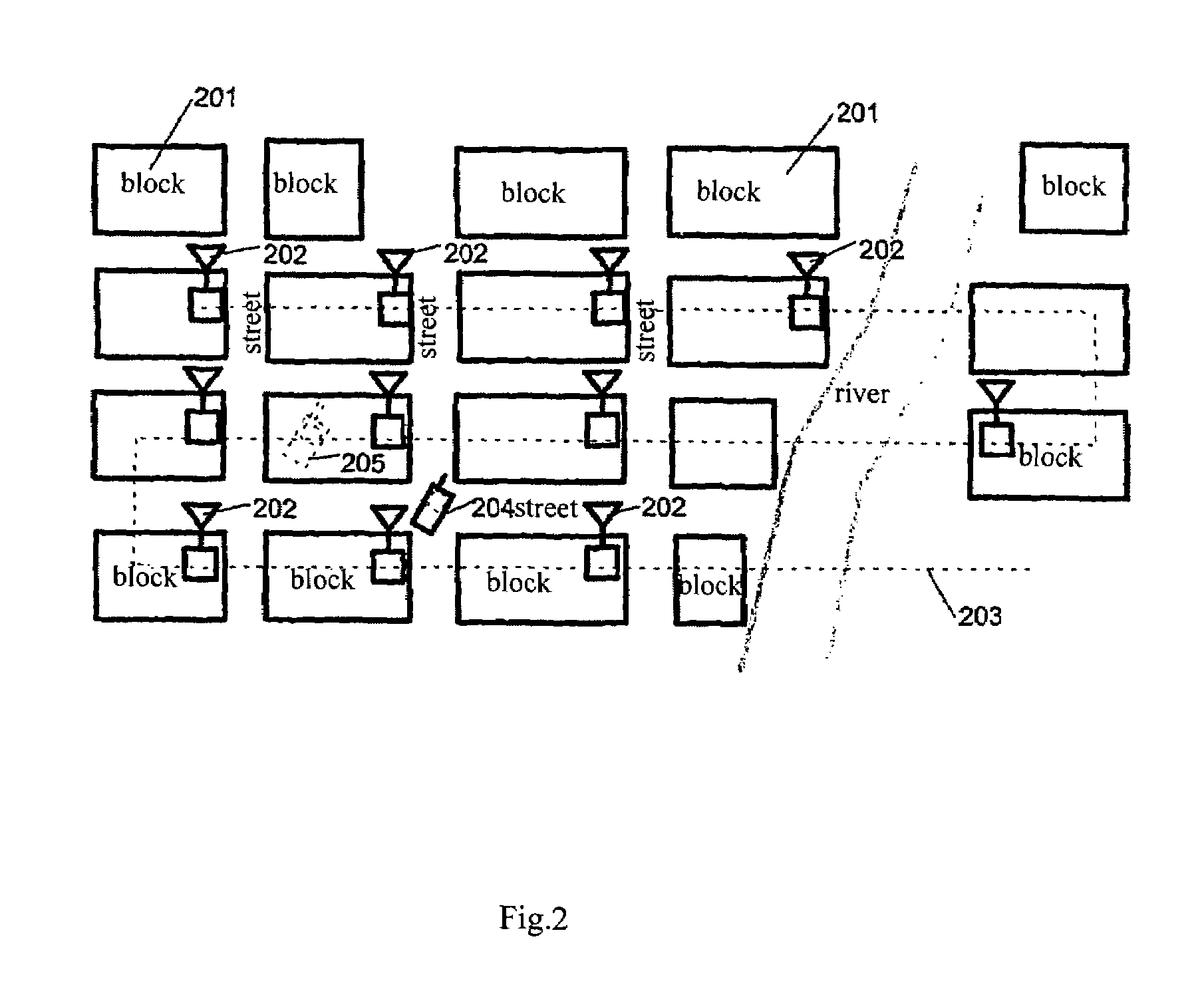Method and apparatus for increasing accuracy for locating cellular mobile station in urban area
a technology of urban area and cellular mobile station, applied in direction finders using radio waves, instruments, wireless commuication services, etc., to achieve the effect of increasing the accuracy of locating
- Summary
- Abstract
- Description
- Claims
- Application Information
AI Technical Summary
Benefits of technology
Problems solved by technology
Method used
Image
Examples
Embodiment Construction
[0020]FIG. 1 shows the configuration relationship between the assistant locating apparatus for a mobile station and the cellular mobile communication system, wherein the assistant locating apparatus is used only when the locating error resulted from NLOS exceeds the specifications for a mobile station to be located. Several base station 101 and buildings are distributed around the mobile station 113. Due to the blockage of those buildings, signals from at least some of the base stations (e.g., base station 1 or 2) cannot be transmitted to the mobile station 113 directly. To increase LOS in the area where the mobile station 113 is located, an assistant locating apparatus is added in FIG. 1. The assistant locating apparatus in FIG. 1 comprises a RTD measuring antenna 109, an assistant locating pilot frequency transmitting antenna 110, an air interface antenna 114, a processor 115, and corresponding feed lines.
[0021]In FIG. 1, the RTD measuring antenna 109 faces the locating measuremen...
PUM
 Login to View More
Login to View More Abstract
Description
Claims
Application Information
 Login to View More
Login to View More - R&D
- Intellectual Property
- Life Sciences
- Materials
- Tech Scout
- Unparalleled Data Quality
- Higher Quality Content
- 60% Fewer Hallucinations
Browse by: Latest US Patents, China's latest patents, Technical Efficacy Thesaurus, Application Domain, Technology Topic, Popular Technical Reports.
© 2025 PatSnap. All rights reserved.Legal|Privacy policy|Modern Slavery Act Transparency Statement|Sitemap|About US| Contact US: help@patsnap.com



